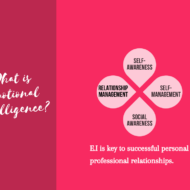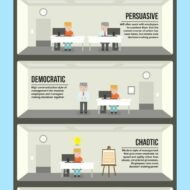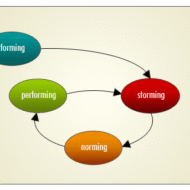Posted by Managementguru in Business Management, Change management, Human Resource, Organisational behaviour
on Jul 25th, 2014 | 0 comments

EQ or EI When we talk about IQ or Intelligence Quotient, another entity which is indispensable to the smooth running of your business comes into the picture. Yes, I’m talking about Emotional Quotient or EQ, also called as Emotional Intelligence or EI. The concept of emotional intelligence is a blanket term that covers a broad collection of individual skills and dispositions, usually referred to as soft skills or inter and intra-personal skills. One must be adept at handling situations which warrant application of EI and at the same time strong in his/her basic IQ. Answer these simple questions and please don’t think way too extensively. Simple thinking will do… 1. How do you put a giraffe into a refrigerator? The correct answer is: Open the refrigerator put in the giraffe and close the door. This question tests whether you tend to do simple things in an overly complicated way. 2. How do you put an elephant into a refrigerator? The wrong answer is: Open the refrigerator put in the elephant and close the door. The correct answer is: Open the refrigerator, take out the giraffe, put in the elephant and close the door. This tests your ability to think through the repercussions of your actions. 3. The Lion King is hosting an animal conference; all the animals attend except one. Which animal does not attend? The correct answer is: The Elephant. The Elephant is in the refrigerator. This tests your memory. OK, even if you did not answer the first three questions, correctly, you still have one more opportunity to show your abilities. 4. There is a broad, deep river you must cross. But it is inhabited by hungry crocodiles. How do you manage it? The correct answer is: You swim across. All the Crocodiles are attending the Animal Meeting! This tests whether you learn quickly from your mistakes. This EXERCISE is cited just to show that logic or reasoning is an important element in management; at workplace or home. Parallel Thinking Just that you have to prune your memory to enhance your parallel thinking. In general parallel thinking is a further development of the well-known lateral thinking processes, focusing even more on probabilities—looking for what can be rather than for what is. Be Mindful of Others’ emotions: Emotional intelligence can be defined as the ability to monitor one’s own and other people’s emotions, to discriminate between different emotions and label them appropriately and to use emotional information to guide thinking and behavior. Emotional intelligence involves being MINDFUL of emotions and how they can affect and interact with traditional intelligence (e.g., impair or enhance judgment, etc.). One must also be able to develop and maintain healthy interpersonal relationships apart from being intelligent. It involves a lot of psychology which is in-built in our mechanism and heightened by our exposure to various work situations and challenges. An examination of more than 300 top-level executives from fifteen global companies showed that six emotional competencies distinguished stars from the average. Influence Team leadership Organizational Awareness Self-confidence Achievement Drive and Leadership Using Emotional Intelligence on the Job Emotional awareness is being in touch with the feelings of others. Well, if you say that “Emotions don’t go well with Logic”, and “Emotions can’t be mixed with Business”, I’d like to remind you “A controlled mind and cheerful spirit” are crucial when it comes to employee engagement and sustaining their morale. Even though your employees are well trained and technically experts in their own area, it takes that extra something for them to work whole-heartedly for their principals. They have to identify themselves with the organization and its objectives, in particular with the key persons...

Posted by Managementguru in Business Management, Leadership, Principles of Management
on Mar 5th, 2014 | 0 comments

Management styles vary by company, level of management, and even from person to person. Let us see the different management styles practised in different parts of the world for your better understanding. Managerial practices in Asian countries The managerial practices in Asian countries like Japan, China and India are quite different from that of economically advanced countries in the west. Industrial nations are in a position to adopt managerial approaches that suits their mode of operations and nature of labor force. In Asian countries, a paternalistic or participative leadership style is followed while directive style of leadership pattern suits the west. Basically, this difference arises due to the cultural background of people influenced by their tradition. Japanese management East Asian countries like Japan have a set of cultural norms that cannot be overlooked or sacrificed for the sake of business. Their cultural instincts are very strong and they believe in life long employment. Japanese management practice lays emphasis on seniority and shows great concern for each and every employee. The objectives are set by the lower level employees and it is passed on to the top level management for approval. These proposals are scrutinized by the supervisors who tactfully suggest the necessary changes, instead of simply accepting or rejecting the proposed objectives. This creates a sense of belonging and the employees identify themselves with the goals of the company. Participative Style You cannot assure that a participative style of decision making always proves beneficial. Sometimes, managers have to show their individualism by taking tough decisions, when the situation warrants for such an action. Here the leader also becomes the firm decision maker. This is quite common in the west, where the leaders identify themselves with the profession rather than the company. Such solo decision making sometimes result in sub-optimal decisions. We are not going to compare and contrast between the various management approaches and which is better. The discussion aims at throwing light on different approaches and styles of management and how it affects the productivity of an organization. https://click.linksynergy.com/deeplink?id=omtjfcspUOE&mid=39197&murl=https%3A%2F%2Fwww.udemy.com%2Fcourse%2Fleadership-and-lean-management-masterclass%2F Collective Decision Making Japanese management relies on collective decision making (consensus), where the decision making might take time, but it is implemented quickly. The Japanese management is highlighted in this discussion to demonstrate the effectiveness of their approach which is followed by many western nations to ensure success. The novelty is in the fact that they treat people as human beings and not just another factor in production. The communication flows from bottom to top and back. Care is taken to define the problem with clarity before going for a decision. In the west, managers are criticized to come to conclusions even before defining the problem. https://click.linksynergy.com/deeplink?id=omtjfcspUOE&mid=39197&murl=https%3A%2F%2Fwww.udemy.com%2Fcourse%2Fnew-manager%2F Bureaucracy Bureaucracy still prevails in most of the Asian countries hindering the progress of business communities. What started as an amazing administrative legacy has now turned authoritarian. Even if the employee knows what the manager says is incorrect; he has to obey the instructions, just because it is issued by his superior. The people are expected to follow the instructions provided and not to question or suggest. Collective Responsibility Collective responsibility and accountability, an informal organizational structure, common organizational culture and competitive spirit makes participative management approach distinct and successful. When the leader acts as a facilitator and not a dictator, naturally the employees will try to give their best shot. Collective responsibility might sometimes lead to ambiguity of decision responsibility. But individual responsibility and accountability vouches for clear and specific decision responsibility. Quality control circle Quality control circle is another feature that distinguishes Japanese management from others. Workshops are organized in a periodic fashion to arrive at solutions for problem situations, be it worker welfare, bottlenecks or interpersonal skills. The focus is on group performance and peers help one another in enhancing the performance and...

Posted by Managementguru in Business Management, Organisational behaviour, Principles of Management
on Mar 3rd, 2014 | 0 comments

Group Dynamics Any effective group has three core activities: 1. Accomplishing its goals 2. Maintaining itself internally 3. Developing and changing in ways that improves its effectiveness. Let us now try to understand the various dimensions of an effective group that facilitate the above mentioned three core elements to function properly which provide a sense of direction to the productive group. a) Group goals: Must be clearly understood. Be relevant to the needs of the group members. Highlight the positive inter dependence of members. Evoke from every member a high level of commitment to their accomplishment. b) Communication: Must communicate their ideas and feelings accurately and clearly. Effective two way communication is mandatory for interaction c) Participation and Leadership: All should participate and all should be listened to. Share responsibilities that eases the burden. Increases the cohesiveness of the group. d) Appropriate decision making procedure: Balance between time and member resources. Flexible decision making to suit the needs of the situation. e) Power and Influence: · Should be equal · Based on expertise, ability and access to information and not on authority · Coalitions must be formed between group members on the basis of mutual influence and interdependence. f) Conflicts: · Are to be encouraged as they promote involvement in the group’s work, improve quality and creativity in decision making. · Minority opinions should be accepted and used g) Group Cohesion: · Needs to be high · Level of acceptance, support, and trust among the members decide how cohesive the group is h) Problem Solving: · Problems should be resolved with minimal energy and permanently · Existence of problems must be found out quickly and solutions should improve the effectiveness of group behavior i) Inter-personal effectiveness: · Needs to be high · It is a measure of how all the consequences of your behavior match your intention. ⇓ Picture Courtesy: 6 WAYS TO DEVELOP A WINNING TEAM CULTURE Group Cohesiveness: This is defined as the average resultant force acting on members to remain in a group. The characteristics or criteria that determine group cohesiveness are as follows: 1. Degree of dependency on the group: The greater the number of individual needs are satisfied, the greater the cohesiveness. 2. Size: If the size of the group interaction is low, it results in low cohesiveness. If the size of the group is small, the members tend to have free and more interaction, leading to high level of cohesiveness and vice versa. 3. Homogeneity: Where the interests and background of the group is similar, you find greater cohesiveness. 4. Outside pressure: Outside pressure minimizes internal conflicts leading to high cohesiveness. You find people responding with greater cohesiveness during times of natural disaster and calamities. 5. Competition: Competition between the members of the same group or intra group competition reduces cohesiveness but competition members of different groups or inter-group competition increases cohesiveness. Group Cohesiveness can be encouraged by the following ways: · Make the group smaller · Encourage agreement with group goals · Increase the time members spend together · Stimulate competition with other groups · Give rewards to groups rather than to a single member · Physically, isolate the group. ...






